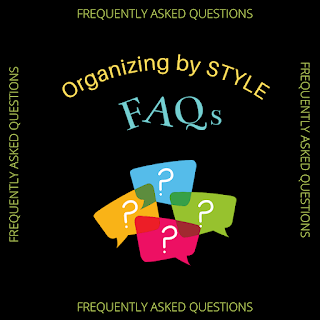'Tis the season to think about planners!
I must confess to having a passion for them. Though I know the advice to have one planner that holds everything is sound, for me, planners are like potato chips.
I can't seem to have just one.
As someone with an I need to see it personal style (more on planners and styles next week), for me, it's all in the layout. Though I have a pile of planners that I use for a plethora of purposes (more on that in January as well), the two I use most regularly rose to the top of the pile because of their layouts.
One has each month on a two-page spread, giving me space to write in all my appointments and see the month at a glance so I can (theoretically) avoid appointment overload. It's big enough that I don't have to squeeze everything into a tiny square, and thin enough to fit in my purse so that I can write down appointments when I make them.
The other is an undated book with space for daily notes. Each Sunday, I transfer all of my personal appointments and school obligations from the monthly planner into the undated book (dating the pages in the process) so that each day has its own page. Yes, I'm aware that I can find both of these features in a single planner and, for a long time, I did. But I love the space for a to-do list and three daily priorities in my undated planner and the process of transferring things from one book to the other reminds me of what I need to do and aligns the personal and the professional, reducing the possibility of my forgetting to be somewhere or do something.
Sound too complicated? Then it's not a good plan for you. But, for me, after years of trial and error (#itsaprocess), I've landed on a plan that helps me keep everything straight without having to lug a ten-pound planner with me everywhere I go. As with all things organizing, though, one size (planner) does not fit all.
Here are a few more things to consider as you go in search of the one that's perfect for you.
Electronic or paper? Do you use your phone for everything? If so, you might already have the perfect planner at your fingertips. Don't like the calendar on your device? There's probably an app for that. Analyzing the strengths and weaknesses of the built-in calendar when it comes to your planning needs can help you figure out what you're looking for....and what you're not.
To note or not to note? I like having pages for notes at the back of the calendar and, if there's some note-writing space on the planner pages themselves, that's a bonus. I don't have a hard and fast rule about what those pages are for. Quite honestly, I sometimes use them because they're the only note paper I have with me but other times, I use them to record things that are time-relevant, like information from doctor's appointments and goals and plans for the year. Again, if you're a planner-on-the-phone person, you might use your Notes app for this.
Parked or portable? As I said at the outset, there's a lot of wisdom in the advice to have a single planner for everything, whether it's in your bag or on the refrigerator. If you're going to break that rule (as I clearly have), make sure you're simplifying things, rather than overcomplicating them. Be honest with yourself about how well your plan is working for you. How often do you forget something that's in the "other" calendar? Never? Great! Keep up the good work! Sometimes? Maybe you need a plan for combining your calendars.
What's the most important feature of a calendar? Its ease of use. It doesn't matter if your calendar is the one that came on your phone, a clearance bin generic version, or an expensive personalized agenda with a monogrammed leather cover. Choosing the tool that works for your styles is half the battle.
What do you like best about your planner?


























